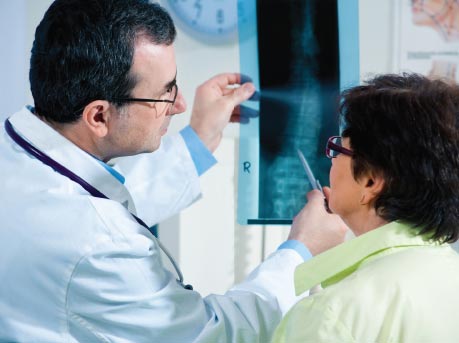Download print-friendly PDF of this article • View Attorney at Law Magazine Publication (Pages 14-15)
A frequently overlooked aspect of a personal injury case is the impact the injury has on the client's ability to earn a living. A significant injury may result in the client's inability to perform their job.
In many cases, it is difficult for attorneys to determine the realistic total value of a forensic case. Individuals with a substantial personal injury often sustain financial damages in several different areas. The most obvious loss is the need for medical treatment and rehabilitation on a shortterm or long-term basis. After injury, this is the most obvious area of attention due to initial and ongoing treatment. Unfortunately, other areas of loss are sometimes neglected or not identified, even in the medical area.
It is important for the personal injury attorneys to retain well-qualified experts who can evaluate and determine case damages, not only in the medical and rehabilitation areas, but also in the capacity to enter or re-enter employment. In my experience, I have had forensic cases where the loss of work capacity and wage loss generated a significant percentage of overall case damages.
The involvement of a professional forensic vocational expert, in many cases, offers the attorney realistic and valid information relating to the medical, rehabilitation and vocational aspects of a case. A highly-qualified expert has the professional credentials to offer opinions on current medical care costs, vocational and earning capacity, lost present and future earning capacity and cost of other replacement services.
"It is important for the personal injury attorneys to retain well-qualified experts who can evaluate and determine case damages, not only in the medical and rehabilitation areas, but also in the capacity to enter or re-enter employment."
Whether retained by a defense attorney or plaintiff attorney, the forensic vocational expert should be experienced in evaluating cases and providing effective expert testimony.
The expert must have the necessary expertise and training background to provide appropriate and fair professional recommendations in the report and also in expert testimony. Finally, it is essential that the forensic vocational expert demonstrate professional expertise, as well as professional concern to assist the individual with a disability in reaching his or her maximum level of independence and employability.
The vocational forensic report outlines present and future needs coupled with current annual costs. In order to create the vocational forensic report the following case development methodology is followed to ensure a consistent and reliable approach:
This process involves medical and rehabilitation analysis, vocational capacity analysis and consideration of training potential. Strategic to the case analysis is the ability and capacity to be employable in the competitive labor market and the degree to which there is an opportunity for employment. In every forensic vocational case, it is essential to determine if there is a loss in the capacity to earn and if the individual's work life expectancy has been impacted. As the final report is based on current annual cost information, it can be projected to life expectancy by an economist to determine the overall case damages based on medical and/or rehabilitation costs combined with overall wage loss.

Mr. Smith is a 34-year-old who was injured in a motor vehicle accident resulting in a low back injury. Subsequent to the accident, he underwent a 2 level fusion with post-op physical therapy. At the time of the accident, he was employed full-time as an electrician. He did graduate from high school and received additional training in his chosen field through the community college. His treating physician indicated that he had reached maximum medical improvement restricting him to lifting no greater than 20 lbs. on an occasional basis. As a result of his permanent restrictions, Mr. Smith was unable to return to his work as an electrician. At the time of the assessment, a clinical intake interview and vocational testing were conducted to determine alternative employment. The final report presented two options for consideration to include direct entry into the workforce and additional training through a community college. The direct entry option projected an annual wage loss of $13,000-$15,000. While the additional training option generated an annual wage loss of $8,500-$10,500.
Clearly a vocational forensic report and the testimony of an experienced forensic expert are vital components of the puzzle in valuing a personal injury case.
Julie Sawyer-Little, owner of Sawyer Consulting, LLC, has provided life care planning and vocational forensic consulting since 1998. She received her Master of Science in rehabilitation counseling and vocational evaluation from East Carolina University. She is also a licensed occupational therapist. She has provided vocational forensic consultation, long-term disability evaluation and life care planning services in the area of personal injury, workers' compensation, medical malpractice and family law. Ms. Sawyer-Little is a fellow of the American Board of Vocational Experts and experienced in evaluating level of work capacity, lost wages, benefit of training, and labor market analysis. For more information visit www.jsawyerconsulting.com or call (919) 772-1486.
Vol. 4 No. 1 Page 14: Attorney at Law Magazine® North Carolina Triangle